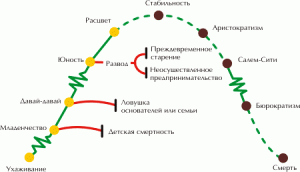Master class by Itzhak Adizes “Change Management under Uncertainty” in Kyiv
On May 28, a master class by Yitzhak Adizes “Change Management under Uncertainty” was held in Kyiv.
And although the event was divided into several parts with their own topics, it turned out to be a very organic performance, where the first part follows from the other and so on.
The topics covered in the agenda were:
- The nature of changes in the modern world: how companies find their place in them.
- Patterns of development of companies. What are the most common traps entrepreneurs fall into and how to avoid them.
- Analysis of the organizational structures of companies participating in the master class. Recommendations of Dr. Adizes.
- Key lessons for Ukrainian companies.
- The experience of clients who have implemented the Adizes methodology, where Vladislav Burda, President of Red Head Family Corporation and Oleg Mikhailenko, Head of MIRS spoke.
Friends, I don’t want to offend anyone, but the organization of the event from the IdeasFirst company was an order of magnitude higher than the one that I visited “Three Stars on the Same Stage” in October last year. For more details, see
- Speech by Gleb Arkhangelsky in Kyiv “Proper rest for those who work hard”,
- Speech by Radislav Gandapas in Kyiv “The Wisdom of Motivation”.
Because I don’t see the point in retelling the meaning of the master class, because I had to see it with my own eyes and hear it with my own ears, I offer a selection of interesting expressions from Yitzhak.
- It is necessary to make decisions and implement them, while there must be democracy in decision-making, and dictatorship in implementation.
- There will always be problems! Having problems is life!
- Change creates problems/opportunities. Problem and opportunity are one and the same.
- When making a decision, ask yourself the question: “What is behind your decision? What does it lead to, to integration or disintegration? All problems come from disintegration, and a good solution is not always possible to implement.
- The company needs a complementary team. And there will be conflicts. But they don’t have to be destructive. Doing nothing is destructive. Constructive conflict requires mutual respect and trust.
- Suicide is to stop changing.
- You have to constantly work within the company. Develop it like breathing: inhale – exhale, from the inside – out.
- Life is about giving and taking. There must be reciprocity. If you want freedom, give it!
- Success is the ratio between external integration and internal disintegration.
- Integration includes:
- Shared vision and goals. General values.
- The correct structure of the distribution of roles.
- Well-established decision-making process.
- Suitable people who are not afraid of conflict.
Stages of company life according to Adesis:
- Courtship. Working on an idea, gathering a team.
Infancy. During this period, the autocratic way of governing is considered normal. The company is particularly flexible and predictable - Behavior. For such companies, you cannot take people with an MBA, they are not flexible.
- Come on, come on, or go-go. (During this period, there is a danger of falling into the trap of the founder or family). The company is growing in several directions, it starts to lack information, there is no organizational structure. The company is built around people. It is necessary to gradually move to the next stage: to introduce incentive and control systems, to introduce job responsibilities. Founder’s mistakes during the transition: a) the desire to sell everything; b) attracting investors.
- Youth (During this period there is a danger of divorce (especially if there are several founders), which ends either with premature aging or unfulfilled entrepreneurship). Here we need a clear structure of the company, a mission.
- Rise.
- Stability.
- Aristocracy.
- early bureaucracy.
- Bureaucracy.
- Death.
The structure of the company should not combine:
- finance and accounting;
- personnel and personnel development;
- marketing and sales;
- development and production.
Internet marketing expert. Head of marketing agency MAVR.
Business degree “Master of Business Administration” (MBA).



